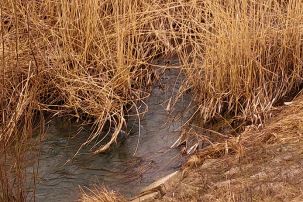Lesson summary
This activity has been developed to give children the opportunity to learn more about wind and energy. Children look at wind and wind power by playing with paper windmills and discussing wind energy.
This activity is designed to help connect children to the wonders of the natural world through sensory and play-based learning.
Activity Intention:
- This activity is designed to help connect children to the wonders of the natural world through sensory and play-based learning.
Lesson guides and printables
Lesson details
Curriculum mapping
Learning Outcome 2:
- Children are connected with and contribute to their world
- 2.3 Children become aware of fairness
Learning Outcome 4:
- Children are confident and involved learners
- 4.1 Children develop dispositions for learning such as curiosity, cooperation, confidence, creativity, commitment, enthusiasm, persistence, imagination and reflexivity
- 4.2 Children develop a range of skills and processes such as problem solving, inquiry, experimentation, hypothesising, researching and investigating
- 4.3 Children transfer and adapt what they have learned from one context to another
- 4.4 Children resource their own learning through connecting with people, place, technologies and natural and processed materials
Resources required
- Windmill templates
- Child-safe scissors
- A piece of recycled card/strong paper
- A piece of coloured card
- A stick or strong drinking straw
- A drawing pin or thumbtack
- Glue or gluestick
- A hammer (optional)
- Streamers and sticky tape (optional).
Supporting resources:
- Stories – The Windy Farm – optional (click here to purchase).
- Websites – Climate Kids – NASA
- Collect items and images that are associated with the theme of wind to use as conversation starters.
- Energy fact sheet
Additional Info
This lesson has been created in partnership with WWF-Australia. Earth Hour is the world’s largest community-driven climate change campaign. At the centre of Earth Hour is switching off lights to show a commitment to taking action.
Thousands of teachers use Earth Hour’s education program to enrich their curriculum and provide pathways for young people to create change in their world.
For the most up to date Earth Hour dates, times, and events, check here.
Cool Australia Presents Energy (https://vimeo.com/74926420)


Welcome back!
Don't have an account yet?
Log in with:
By signing up to Cool.org you consent and agree to Cool's privacy policy to
store, manage and process your personal information. To read more, please see
our privacy policy here(Opens in new tab).
Create your free Cool.org account.
Many of our resources are free, with an option to upgrade to Cool+ for premium content.
Already have an account?
Sign up with:
By signing up to Cool.org you consent and agree to Cool's privacy policy to
store, manage and process your personal information. To read more, please see
our privacy policy here(Opens in new tab).